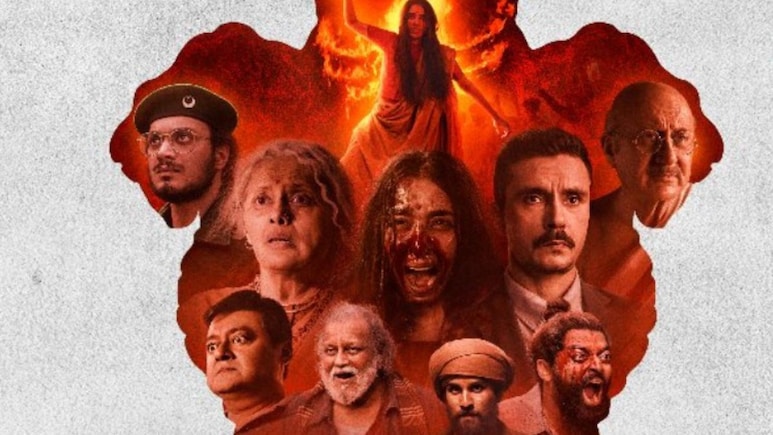
At 3.25-hour runtime, Vivek Agnihotri's film The Bengal Files is unending to say the least. Based on the communal violence during the 1940s in Bengal, focusing on the 1946 Great Calcutta Killings (Direct Action Day) and the Noakhali riots, the Hindi movie is disturbingly graphic, gory and gruesome.
This lesser known bloodied chapter about Indian history needed a much more nuanced filmmaking. The imagery is in your face and the performances are screechy and over the top.
The film, dedicated to "all victims of communal violence", asks many questions about communal violence.
And yet the one answer it settles at is violence, something it constantly disapproves as people are being massacred and raped left, right, and centre, with the streets of Kolkata strewn with stinking dead bodies of Hindus.
The Bengal Files keeps moving between 1940s Bengal and the current West Bengal, where a Dalit journalist Gita Mandal goes missing in Murshidabad and a local MLA from the minority community called Sardar Hussein (Saswata Chatterjee) is believed to be have been behind it but who will dare stand up to him.
"Batenge toh katenge (If divided, we will be cut)" declares Sardar Hussein in a speech. Where have we heard it before?
There's another suspect, Gita's landlady called Maa Bharati (Pallavi Joshi), an old woman who has dementia with survivor's guilt. Clearly, Maa Bharati is the human incarnate of a ravaged, traumatised Bharat Mata.
The viewer sees the past of West Bengal through Maa Bharati's younger self Bharati Banerjee (Simratt Kaur), a law student from an affluent family who witnesses all possible horrors of riots and communal violence during the 1940s pre-Partition period.
There are lots of incendiary speeches, acts of arson and vandalism to the calls of Allah Hu Akbar and Pakistan Zindabad in the film.
A young Kashmiri Pandit CBI officer Shiva Pandit, who is still haunted by the 1990s exodus of Kashmiri Hindus, shows us the "current reality" of West Bengal with a special emphasis on how vote bank politics works when the percentage of a certain community rises by legitimising illegal immigrants.
Gopal Patha, the real-life character that was at the centre of The Bengal Files controversy, is introduced as a kasai, a butcher.
Gopal Patha (Saurav Das), a Maa Kali devotee, asks all Hindus to unite and kill 10 Muslims if they kill 1 Hindu. He and his associates do the same.
In The Bengal Files, which was given an 'A' certificate by the Censor Board, a Sikh World War II veteran by the name of Amarjeet Arora is literally cut into half and a local zamindar called Rajendralal Roychowdhury -- who is said to be a member of the Noakhali Hindu Mahasabha -- is beheaded in front of a Kali temple at his house.
All these acts are committed by a character named Ghulam (Namashi Chakraborty), apparently modelled on Gholam Sarwar Husseini, who played a key role in the 1946 Noakhali riots. This Ghulam also assaults Bharati in public on the midnight of August 15, 1947, marking the birth of Pakistan and rechristening her as Ayesha Jahan.
In his film, Vivek Agnihotri also makes space to throw around pop culture references.
A local goon who is a hangers-on of Sardar Hussein is spotted wearing a T-shirt with singer Arijit Singh's face embossed on it.
At a local police station, when a hoodlum tries sitting in a chair while he is speaking with Shiva Pandit, the hot-blooded cop, slaps him and says, "Ye police station hai tere dada ka kotha nahin hai". Poor Zanjeer flashbacks, anyone?
A Godfather-like theme plays in the background every now and then. There's also a meta moment when Mithun Chakraborty's character (a mute drunkard who is a former cop) calls Darshan Kumar's Shiva Pandit "Dada".
A common refrain throughout the film is that only names and faces change, but "khela toh wahi hai (the game remains the same)". Then there's also "We the People of Bharat", a phrase that's so oft-repeated in the film as if it were a PPL (product placement).
Also Read | No Ban On The Bengal Files In Bengal But You Can't Watch The Film In Kolkata Theatres

